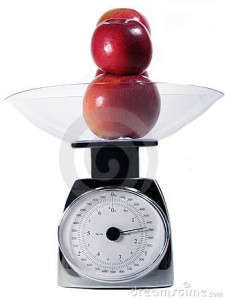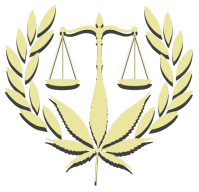 What does a drug paraphernalia charge mean? If you have been charged with possession of Drug Paraphernalia charge you are probably asking how everyday objects are considered drug paraphernalia under the law. The question is often:
What does a drug paraphernalia charge mean? If you have been charged with possession of Drug Paraphernalia charge you are probably asking how everyday objects are considered drug paraphernalia under the law. The question is often:
Is a sandwich bag paraphernalia? Is a bong paraphernalia? Is a pipe paraphernalia? Are rolling papers paraphernalia? Are cigarillo wrappers paraphernalia? Is a lighter paraphernalia? Is an apple paraphernalia? Is a syringe paraphernalia? Is a scale paraphernalia? Is tin foil paraphernalia?
In Maryland, the law is rather complicated. The Jury or Judge will need to consider the factors in Section 5-619 of the Maryland Criminal Code. There is not a clear cut answer for when an object is paraphernalia but the fact finder (judge or jury) is tasked with using logic and a list of factors to find that an object is paraphernalia.
If you receive a drug paraphernalia charge you could face serious consequences including fines. If this is your second drug paraphernalia charge you could face jail time and/or fines. If you are charged with a crime, you must speak with a criminal defense attorney regarding your case. This blog is for legal information only and should not be considered legal advice.
Here’s the statute as of 2013 word for word.
Section 5-619 Drug paraphernalia
(a) Factors to determine drug paraphernalia. — To determine whether an object is drug paraphernalia, a court shall consider, among other logically relevant factors:
(1) any statement by an owner or a person in control of the object concerning its use;
(2) any prior conviction of an owner or a person in control of the object under a State or federal law relating to a controlled dangerous substance;
(3) the proximity of the object, in time and space, to a direct violation of this section or to a controlled dangerous substance;
(4) a residue of a controlled dangerous substance on the object;
(5) direct or circumstantial evidence of the intent of an owner or a person in control of the object to deliver it to another who, the owner or the person knows or should reasonably know, intends to use the object to facilitate a violation of this section;
(6) any instructions, oral or written, provided with the object concerning its use;
(7) any descriptive materials accompanying the object that explain or depict its use;
(8) national and local advertising concerning use of the object;
(9) the manner in which the object is displayed for sale;
(10) whether the owner or a person in control of the object is a licensed distributor or dealer of tobacco products or other legitimate supplier of related items to the community;
(11) direct or circumstantial evidence of the ratio of sales of the object to the total sales of the business enterprise;
(12) the existence and scope of legitimate uses for the object in the community; and
(13) expert testimony concerning use of the object.
(b) Finding of intention or design — Innocence of owner not dispositive. — The innocence of an owner or a person in control of the object as to a direct violation of this section does not prevent a finding that the object is intended for use or designed for use as drug paraphernalia.
(c) Use or possession with intent to use; penalty; medical necessity. —
(1) Unless authorized under this title, a person may not use or possess with intent to use drug paraphernalia to:
(i) plant, propagate, cultivate, grow, harvest, manufacture, compound, convert, produce, process, prepare, test, analyze, pack, repack, store, contain, or conceal a controlled dangerous substance; or
(ii) inject, ingest, inhale, or otherwise introduce into the human body a controlled dangerous substance.
(2) A person who violates this subsection is guilty of a misdemeanor and on conviction is subject to:
(i) for a first violation, a fine not exceeding $ 500; and
(ii) for each subsequent violation, imprisonment not exceeding 2 years or a fine not exceeding $ 2,000 or both.
(3) A person who is convicted of violating this subsection for the first time and who previously has been convicted of violating subsection (d)(4) of this section is subject to the penalty specified under paragraph (2)(ii) of this subsection.
(4) (i) 1. In this paragraph the following words have the meanings indicated.
2. “Bona fide physician-patient relationship” means a relationship in which the physician has ongoing responsibility for the assessment, care, and treatment of a patient’s medical condition.
3. “Caregiver” means an individual designated by a patient with a debilitating medical condition to provide physical or medical assistance to the patient, including assisting with the medical use of marijuana, who:
A. is a resident of the State;
B. is at least 21 years old;
C. is an immediate family member, a spouse, or a domestic partner of the patient;
D. has not been convicted of a crime of violence as defined in § 14-101 of this article;
E. has not been convicted of a violation of a State or federal controlled dangerous substances law;
F. has not been convicted of a crime of moral turpitude;
G. has been designated as caregiver by the patient in writing that has been placed in the patient’s medical record prior to arrest;
H. is the only individual designated by the patient to serve as caregiver; and
I. is not serving as caregiver for any other patient.
4. “Debilitating medical condition” means a chronic or debilitating disease or medical condition or the treatment of a chronic or debilitating disease or medical condition that produces one or more of the following, as documented by a physician with whom the patient has a bona fide physician-patient relationship:
A. cachexia or wasting syndrome;
B. severe or chronic pain;
C. severe nausea;
D. seizures;
E. severe and persistent muscle spasms; or
F. any other condition that is severe and resistant to conventional medicine.
(ii) 1. In a prosecution under this subsection involving drug paraphernalia related to marijuana, the defendant may introduce and the court shall consider as a mitigating factor any evidence of medical necessity.
2. Notwithstanding paragraph (2) of this subsection, if the court finds that the person used or possessed drug paraphernalia related to marijuana because of medical necessity, on conviction of a violation of this subsection, the maximum penalty that the court may impose on the person is a fine not exceeding $ 100.
(iii) 1. In a prosecution under this subsection involving drug paraphernalia related to marijuana, it is an affirmative defense that the defendant used or possessed drug paraphernalia related to marijuana because:
A. the defendant has a debilitating medical condition that has been diagnosed by a physician with whom the defendant has a bona fide physician-patient relationship;
B. the debilitating medical condition is severe and resistant to conventional medicine; and
C. marijuana is likely to provide the defendant with therapeutic or palliative relief from the debilitating medical condition.
2. A. In a prosecution under this subsection involving drug paraphernalia related to marijuana, it is an affirmative defense that the defendant possessed drug paraphernalia related to marijuana because the drug paraphernalia related to marijuana was intended for medical use by an individual with a debilitating medical condition for whom the defendant is a caregiver.
B. A defendant may not assert the affirmative defense under this subsubparagraph unless the defendant notifies the State’s Attorney of the defendant’s intention to assert the affirmative defense and provides the State’s Attorney with all documentation in support of the affirmative defense in accordance with the rules of discovery provided in Maryland Rules 4-262 and 4-263.
3. an affirmative defense under this subparagraph may not be used if the defendant was:
A. using marijuana in a public place or assisting the individual for whom the defendant is a caregiver in using the marijuana in a public place; or
B. in possession of more than 1 ounce of marijuana.
(d) Delivery or sale; penalty. —
(1) Unless authorized under this title, a person may not deliver or sell, or manufacture or possess with intent to deliver or sell, drug paraphernalia, knowing, or under circumstances where one reasonably should know, that the drug paraphernalia will be used to:
(i) plant, propagate, cultivate, grow, harvest, manufacture, compound, convert, produce, process, prepare, test, analyze, pack, repack, store, contain, or conceal a controlled dangerous substance; or
(ii) inject, ingest, inhale, or otherwise introduce into the human body a controlled dangerous substance.
(2) A person who violates this subsection is guilty of a misdemeanor and on conviction is subject to:
(i) for a first violation, a fine not exceeding $ 500; and
(ii) for each subsequent violation, imprisonment not exceeding 2 years or a fine not exceeding $ 2,000 or both.
(3) A person who is convicted of violating this subsection for the first time and who previously has been convicted of violating paragraph (4) of this subsection is subject to imprisonment not exceeding 2 years or a fine not exceeding $ 2,000 or both.
(4) If a person who is at least 18 years old violates paragraph (1) of this subsection by delivering drug paraphernalia to a minor who is at least 3 years younger than the person, the person is guilty of a separate misdemeanor and on conviction is subject to imprisonment not exceeding 8 years or a fine not exceeding $ 15,000 or both.
(e) Advertising; penalty. —
(1) A person may not advertise in a newspaper, magazine, handbill, poster, sign, mailing, or other writing or publication, or by sound truck, knowing, or under circumstances where one reasonably should know, that the purpose of the advertisement, wholly or partly, is to promote the sale or delivery of drug paraphernalia.
(2) A person who violates this subsection is guilty of a misdemeanor and on conviction is subject to:
(i) for a first violation, a fine not exceeding $ 500; and
(ii) for each subsequent violation, imprisonment not exceeding 2 years or a fine not exceeding $ 2,000 or both.


